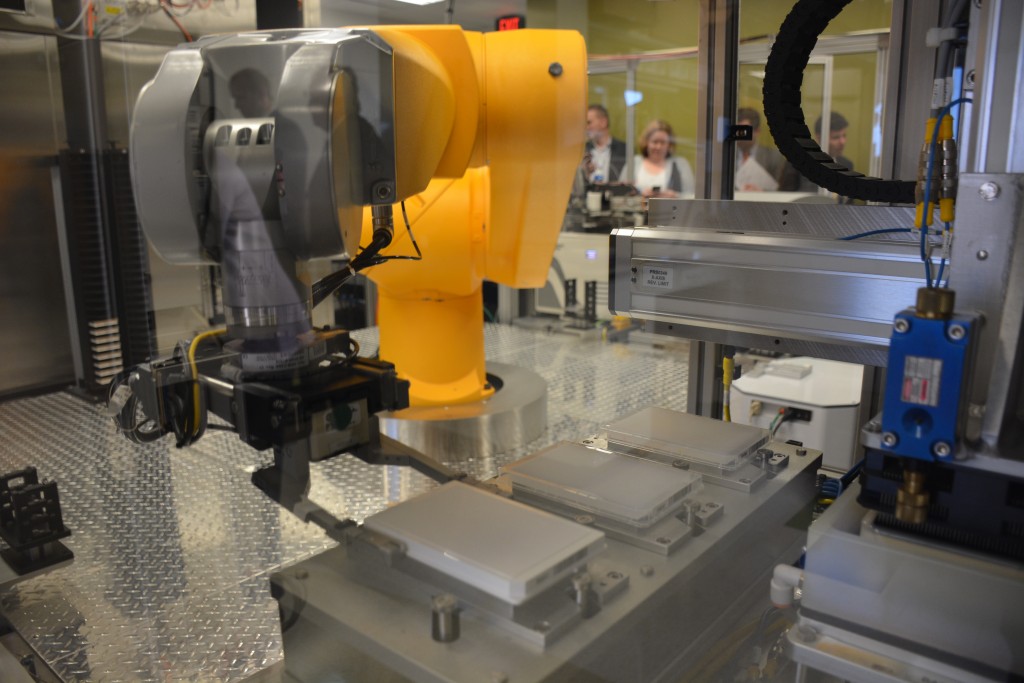When Robots and Metabolism Collide: EPA and Partners Announce Transform Tox Testing Challenge Semi-Finalists
By Kevin Kuhn
When I tell my friends about chemical high-throughput screening and the Transform Tox Testing Challenge, I always start with the robot. Why? Because people love robots.

Robot in action at the National Center for Advancing Translational Sciences (NCATS) where it is housed.
The Robot, i.e. the ultra-high-throughput robotic screening system (pictured) is just one example of a suite of automated systems designed to test and screen chemicals. The system identifies chemicals’ potential for trouble faster and cheaper than ever before, and without the need to test on animals.
Thanks to these automated systems and Tox21 (a cooperative effort uniting EPA, the National Institutes of Health (NIH), and the Food and Drug Administration), we have run thousands and thousands of experiments to see how chemicals affect cells, their processes, and the proteins that do the work. It truly is some amazing research.
Of course, it wouldn’t be research if the system was perfect. Here’s the rub: cells used in EPA’s current lab tests do not typically break down or metabolize chemicals like they would in the body. This means that these tests may overlook chemicals that could be metabolized into a more toxic form. We need a robot-friendly way of making our lab tests act more like the human body when evaluating chemicals’ toxicity.
To find a solution, EPA, NIH’s National Center for Advancing Translational Sciences (NCATS), and the National Toxicology Program, headquartered at the National Institute of Environmental Health Sciences, launched the Transform Tox Testing Challenge in January.
Now we are thrilled to announce that we are awarding a total of $100,000 to ten semi-finalists for their amazing ideas. Descriptions of these promising proposals are available here. The semi-finalists have brought the best of modern technological approaches to bear on the problem, and we couldn’t be more excited about the ideas.
Right now these proposals are simply ideas on paper, but thanks to the challenge prize money, these solvers will have the opportunity to develop their plans into working prototypes and enter Stage 2 of the competition. EPA will host a workshop for the semi-finalists in July so that they can meet one another, learn more about our great set of screening systems, and potentially combine their talents to strengthen their Stage 2 entries.
With the possibility of solving this problem on the horizon, we’re one step closer to improving toxicity testing and protecting human health better than ever before. And, to be honest, that is even cooler than the robot.
For more information: transformtoxtesting.com
About the Author: Kevin Kuhn, Ph.D. is an advisor to the Chief Innovation Officer in the U.S. Environmental Protection Agency’s Office of Research and Development and manages the Pathfinder Innovation Projects – a competition that provides seed funding for EPA research scientists to pursue high-risk, high-reward research. Learn more about EPA Innovation at: https://www.epa.gov/innovation.



